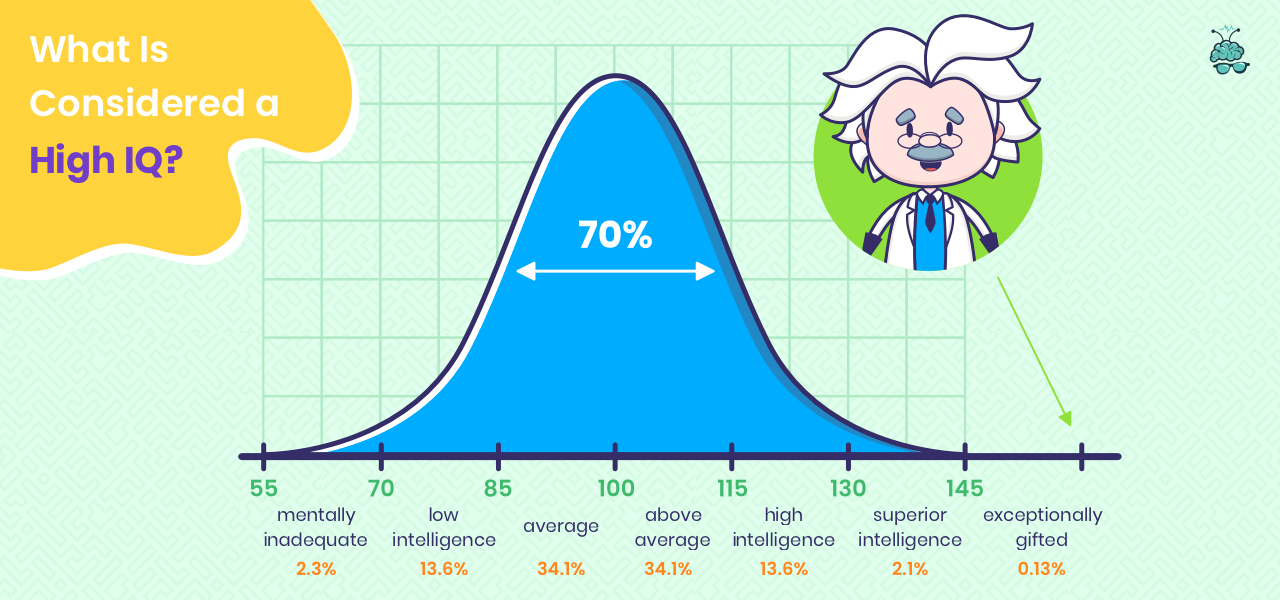Understanding IQ and its distribution can provide valuable insights into human intelligence across various demographics. This article delves into the concept of IQ, its measurement, and the percentage of the population that scores below the average IQ of 100. By examining historical data, research findings, and expert opinions, we aim to shed light on this intriguing topic.
Intelligence Quotient (IQ) is a standardized measure used to assess human intelligence. It is often employed in educational and psychological contexts to evaluate cognitive abilities. The average IQ score is set at 100, with a standard deviation of 15. This means that most of the population (about 68%) scores within one standard deviation of the average, i.e., between 85 and 115.
In this article, we will explore how many individuals fall below the 100 IQ threshold, the implications of having a lower IQ, and how these scores are distributed across different populations. We will also look at the factors influencing IQ scores and what they mean for education and society as a whole.
Table of Contents
- What is IQ?
- History of IQ Testing
- IQ Distribution and Bell Curve
- Population Below 100 IQ
- Implications of Low IQ
- Factors Affecting IQ Scores
- Can IQ be Improved?
- Conclusion
What is IQ?
IQ, or Intelligence Quotient, is a score derived from standardized tests designed to measure human intelligence. These tests assess various cognitive skills, including logical reasoning, problem-solving, and verbal comprehension. The concept of IQ was first introduced by French psychologist Alfred Binet in the early 20th century.
History of IQ Testing
The development of IQ testing has a rich history, beginning with Binet and his colleague Théodore Simon, who created the first intelligence test in 1905. Their aim was to identify students needing special educational support. Over the years, various tests have been developed, including the Stanford-Binet and the Wechsler Adult Intelligence Scale.
IQ Distribution and Bell Curve
IQ scores follow a normal distribution, commonly known as the bell curve. This means that most people score around the average, with fewer individuals scoring very low or very high. Here’s a breakdown of the distribution:
- Below 70: 2.2% (Intellectual Disability)
- 70-84: 13.6%
- 85-99: 34.1%
- 100-114: 34.1%
- 115-130: 13.6%
- Above 130: 2.2% (Gifted)
Population Below 100 IQ
According to the bell curve distribution, approximately 50% of the population scores below an IQ of 100. This includes individuals who score between 70 and 99, which is a significant portion of society. Specifically:
- IQ below 70: 2.2%
- IQ between 70 and 84: 13.6%
- IQ between 85 and 99: 34.1%
Combining these figures, we find that about 49.9% of the population has an IQ below 100. This statistic has implications for educational strategies and social support systems.
Implications of Low IQ
Individuals with an IQ below 100 may face various challenges in life, particularly in educational and occupational settings. Some potential implications include:
- Increased difficulty in academic achievement
- Limited career opportunities
- Potential for social stigma
However, it is important to note that IQ is not the sole determinant of success; emotional intelligence, perseverance, and social skills also play critical roles.
Factors Affecting IQ Scores
Several factors can influence IQ scores, including:
- Genetics: Studies suggest that genetics can account for a significant portion of IQ variance.
- Environment: Socioeconomic status, education quality, and parental involvement can impact cognitive development.
- Nutrition: Proper nutrition during critical developmental periods is essential for cognitive growth.
Can IQ be Improved?
There is ongoing debate among experts regarding the malleability of IQ. While traditional views suggest that IQ is relatively stable, some research indicates that targeted interventions, such as cognitive training and enrichment programs, can lead to improvements in IQ scores.
Conclusion
In conclusion, understanding how much of the population has less than 100 IQ provides insight into cognitive diversity within society. With approximately 50% of individuals scoring below this average, it is crucial to consider the implications for education and social support. By recognizing the various factors influencing IQ and acknowledging that intelligence is multidimensional, we can better support individuals in reaching their full potential.
If you found this article informative, please consider leaving a comment, sharing it with others, or exploring more articles on related topics!
Thank you for reading, and we hope to see you back soon for more insightful discussions!




